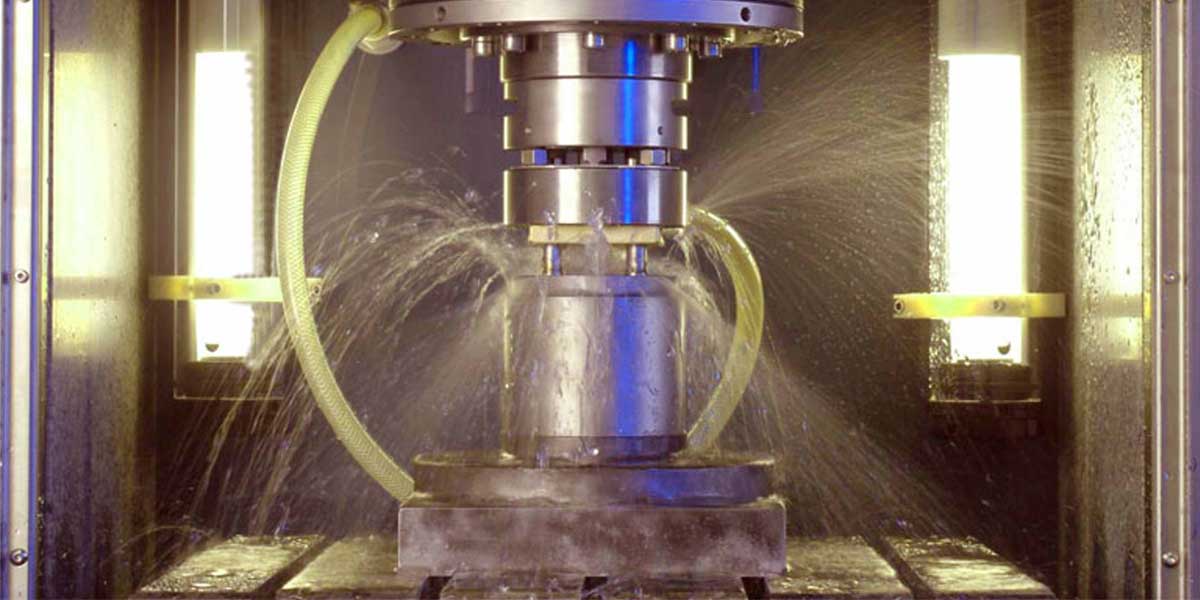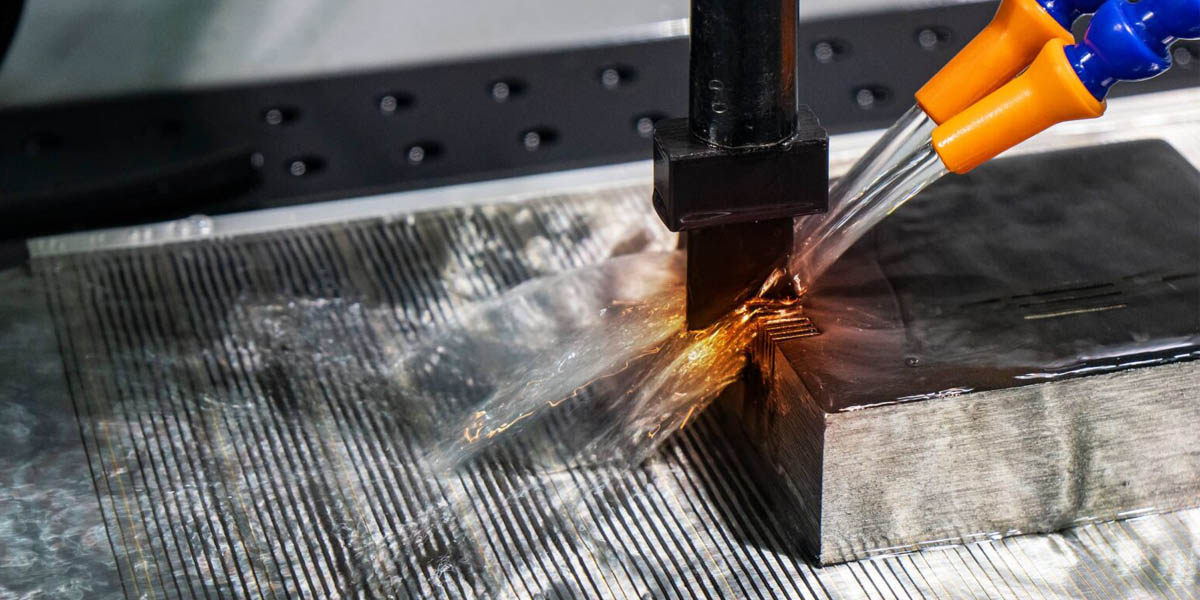ECM (Electrochemical Machining) VS EDM (Electrical Discharge Machining)
In a manufacturing context, ECM and EDM refer to "Electrochemical Machining" and "Electrical Discharge Machining," respectively. They're both non-traditional machining processes used for shaping hard materials and creating complex shapes.
ECM (Electrochemical Machining):

Electrochemical machining (ECM) is a method of removing metal by an electrochemical process. It is normally used for mass production and is used for working extremely hard materials or materials that are difficult to machine using conventional methods.
In ECM, the workpiece and tool are submerged in an electrolyte bath. A carefully controlled direct current is passed between the tool and the workpiece. The tool (cathode) is advanced to the workpiece (anode), and metal is dissolved from the workpiece by electrolysis. The electrolyte helps to carry away the metal ions that have been removed. The result is a precisely shaped workpiece.
Advantages of ECM :
Include no thermal stress, no tool wear, and good surface finish. Disadvantages include high setup costs, the need to handle and dispose of electrolytes, and the inability to machine non-conductive materials.
EDM (Electrical Discharge Machining):

Electrical Discharge Machining (EDM) is a non-traditional machining process based on removing material from a part by means of a series of repeated electrical discharges between tools, called electrodes, and the part being machined in the presence of a dielectric fluid.
During the EDM process, an electrical current is directed to pass between an electrode and a workpiece that has been separated by a dielectric liquid, which is a nonconductive liquid, typically oil or deionized water. When the electrical resistance of the dielectric fluid breaks down, a plasma channel is formed between the electrode and the workpiece, allowing a stream of current to pass through it. This forms a localized melt on both the electrode and the workpiece, which is immediately quenched by the dielectric fluid that flushes away the eroded particles.
EDM has the advantage of being able to machine complex shapes and hard materials. It is generally slow but does not impose force on the workpiece (which can be beneficial for fragile workpieces). The process leaves a surface that can have a very high-quality finish.
The limitations of EDM:That it only works with materials that are electrically conductive. Also, the repeated heating and cooling cycles create micro-cracks on the surface of the workpiece, which can lead to shorter lifespan for the part.
Did ECM&EDM use same material?
Electrochemical Machining (ECM) and Electrical Discharge Machining (EDM) both require the workpiece to be conductive, but they differ in the types of materials that can be efficiently processed.
ECM: This process can be used to machine any material that is electrically conductive, including but not limited to: stainless steel, alloy steel, aluminium, copper, and exotic metals like Inconel, Hastelloy, and Monel. The tool used in ECM is typically made of materials that are resistant to the corrosive action of the electrolyte, like stainless steel.
EDM: EDM is also used to machine electrically conductive materials. It is particularly useful for hard materials that are difficult to machine with traditional techniques. This includes hard alloys and metals such as titanium, hastelloy, kovar, inconel, carbide, hardened steel, and even some types of conductive ceramics. In EDM, the electrode or tool can be made from a variety of materials, but commonly used materials include graphite, copper, and copper alloys due to their good conductivity and ease of machining.
Commonalities between ECM & EDM
Ⅰ. Non-Traditional Machining Processes:
Both ECM and EDM are non-traditional machining processes, which means that they do not involve direct physical contact between the tool and the workpiece, nor do they primarily use mechanical force to remove material.
Ⅱ. Conductive Requirements:
Both processes require that the workpiece be electrically conductive; neither ECM nor EDM can effectively machine non-conductive materials.
Ⅲ. Hard Material Processing:
These two methods are typically used for hard materials that are difficult or impossible to process by conventional machining methods. These include a variety of high-strength alloys and hardened steels.
Ⅳ. No direct tool wear:
In both processes, there is no direct mechanical contact between the tool and the workpiece, which means that tool wear is either non-existent (ECM) or minimal (EDM).
Ⅴ. Finishing Process:
Both methods can be used for finishing, providing a high quality surface finish. However, the exact nature and quality of the finish may differ between the two methods.
Ⅵ. Controlled by Computer Numerical Control (CNC):
In most modern applications, both the ECM and EDM processes are controlled by a CNC system, which allows precise control of machining parameters for high accuracy and repeatability.
Electrochemical machining (ECM) and electrical discharge machining (EDM) are commonly used in a variety of industries for their ability to machine hard materials and complex shapes:
ECM Applications:
Aerospace Industry: ECM is used to machine high-strength aerospace materials that are difficult to machine by traditional methods. Turbine blades, fuel nozzles, and other complex components can be machined using ECM.
Automotive: ECM is used to produce components such as cylinder heads, pistons and fuel system parts.
Medical:ECM is used to manufacture orthopedic implants, surgical instruments and other medical devices.
Power Generation: ECM can be used to machine power generation components such as turbine parts.
EDM Applications:
Tool and Die Industry: EDM is used in a wide range of tool and die manufacturing processes. It is particularly suited to the manufacture of molds and other tools with complex shapes and high precision requirements.
Aerospace and Automotive: Like EDM molding, EDM forming is also used in the aerospace and automotive industries to manufacture complex, high-strength components.
Medical:EDM machines are used to produce medical devices and components such as dental crowns, surgical instruments and implants.
Prototyping: EDM is often used for part prototyping due to its ability to machine complex geometries and its ability to machine a wide range of materials.
Choosing the right solution for your business
If you require intricate and highly accurate designs, ECM may be the ideal choice. Its ability to create complex internal and external geometries with tight tolerances makes it suitable for applications where precision is paramount. On the other hand, if you need to machine materials that are difficult to cut with conventional tools or create small and intricate features, EDM may be the better option.
Consulting with GD-HUB's experts in the field can provide valuable insights into the specific requirements of your application. They can help you determine the most suitable process and guide you in maximizing the benefits of ECM or EDM for your business.